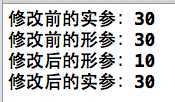标签:android style blog http color java 使用 os
------Java培训、Android培训、iOS培训、.Net培训、期待与您交流! -------
数组:只能由多个相同类型的数据构成
结构体:可以由多个不同类型的数据构成
结构体内部的元素,也就是组成成分,我们一般称为"成员"。
结构体的一般定义形式为:
1 struct 结构体名{ //struct是关键字,是结构体类型的标志 2 3 类型名1 成员名1; 4 5 类型名2 成员名2; 6 7 …… 8 9 类型名n 成员名n; 10 11 };
比如,我们定义一个学生
1 struct Student { 2 char *name; // 姓名 3 int age; // 年龄 4 float height; // 身高 5 };
上面定义了一个叫做Student的结构体,共有name、age、height3个成员。
前面只是定义了名字为Student的结构体类型,并非定义了一个结构体变量,就像int一样,只是一种类型。
接下来定义一个结构体变量,方式有好多种。
1 struct Student { 2 char *name; 3 int age; 4 }; 5 6 struct Student stu; //定义了一个结构体变量,变量名为stu。 struct和Student是连着使用的
1 struct Student { 2 char *name; 3 int age; 4 } stu; //结构体变量名为stu
1 struct { 2 char *name; 3 int age; 4 } stu; //结构体变量名为stu
如下做法是错误的,注意第3行
1 struct Student { 2 int age; 3 struct Student stu; 4 };
1 struct Date { 2 int year; 3 int month; 4 int day; 5 }; 6 7 struct Student { 8 char *name; 9 struct Date birthday; //注意 10 };
1 struct Student { 2 char *name; 3 int age; 4 }; 5 6 struct Student stu;
第1~4行并没有分配存储空间,当执行到第6行时,系统才会分配存储空间给stu变量。
//补齐算法(对齐算法)
// 结构体所占用的存储空间 必须是 最大成员字节数的倍数
比如下面的Student结构体:
1 struct Student { 2 char *name; // 姓名 3 int age; // 年龄 4 float height; // 身高 5 };
在16位编译器环境下,一个Student变量共占用内存:2 + 2 + 4 = 8字节。
将各成员的初值,按顺序地放在一对大括号{}中,并用逗号分隔,一一对应赋值。
比如初始化Student结构体变量stu
1 struct Student { 2 char *name; 3 int age; 4 }; 5 6 struct Student stu = {"heima", 17};
只能在定义变量的同时进行初始化赋值,初始化赋值和变量的定义不能分开,下面的做法是错误的:
1 struct Student stu; 2 stu = {"heima",17};
1 struct Student { 2 char *name; 3 int age; 4 }; 5 6 struct Student stu; 7 8 // 访问stu的age成员 9 stu.age = 17;
第9行对结构体的age成员进行了赋值。"."称为成员运算符,它在所有运算符中优先级最高
1 struct Date { 2 int year; 3 int month; 4 int day; 5 }; 6 7 struct Student { 8 char *name; 9 struct Date birthday; 10 }; 11 12 struct Student stu; 13 14 stu.birthday.year = 1986; 15 stu.birthday.month = 9; 16 stu.birthday.day = 10;
1 struct Student { 2 char *name; 3 int age; 4 }; 5 6 struct Student stu1 = {"heima", 17}; 7 8 // 将stu1直接赋值给stu2 9 struct Student stu2 = stu1; 10 11 printf("age is %d", stu2.age);
跟结构体变量一样,结构体数组也有3种定义方式
1 struct Student { 2 char *name; 3 int age; 4 }; 5 struct Student stu[5]; //定义1
1 struct Student { 2 char *name; 3 int age; 4 } stu[5]; //定义2
1 struct { 2 char *name; 3 int age; 4 } stu[5]; //定义3
上面3种方式,都是定义了一个变量名为stu的结构体数组,数组元素个数是5
1 struct { 2 char *name; 3 int age; 4 } stu[2] = { {"MJ", 27}, {"JJ", 30} };
也可以用数组下标访问每一个结构体元素,跟普通数组的用法是一样的
将结构体变量作为函数参数进行传递时,其实传递的是全部成员的值,也就是将实参中成员的值一一赋值给对应的形参成员。因此,形参的改变不会影响到实参。
注意:使用指针时会影响实参。
1 #include <stdio.h> 2 3 // 定义一个结构体 4 struct Student { 5 int age; 6 }; 7 8 void test(struct Student stu) { 9 printf("修改前的形参:%d \n", stu.age); 10 // 修改实参中的age 11 stu.age = 10; 12 13 printf("修改后的形参:%d \n", stu.age); 14 } 15 16 int main(int argc, const char * argv[]) { 17 18 struct Student stu = {30}; 19 printf("修改前的实参:%d \n", stu.age); 20 21 // 调用test函数 22 test(stu); 23 24 25 printf("修改后的实参:%d \n", stu.age); 26 return 0; 27 }
* 首先在第4行定义了一个结构体类型Student
* 在第18行定义了一个结构体变量stu,并在第22行将其作为实参传入到test函数
输出结果为: ,形参是改变了,但是实参一直没有变过
,形参是改变了,但是实参一直没有变过
* 每个结构体变量都有自己的存储空间和地址,因此指针也可以指向结构体变量
* 结构体指针变量的定义形式:struct 结构体名称 *指针变量名
* 有了指向结构体的指针,那么就有3种访问结构体成员的方式
1 #include <stdio.h> 2 3 int main(int argc, const char * argv[]) { 4 // 定义一个结构体类型 5 struct Student { 6 char *name; 7 int age; 8 }; 9 10 // 定义一个结构体变量 11 struct Student stu = {"MJ", 27}; 12 13 // 定义一个指向结构体的指针变量 14 struct Student *p; 15 16 // 指向结构体变量stu 17 p = &stu; 18 19 /* 20 这时候可以用3种方式访问结构体的成员 21 */ 22 // 方式1:结构体变量名.成员名 23 printf("name=%s, age = %d \n", stu.name, stu.age); 24 25 // 方式2:(*指针变量名).成员名 26 printf("name=%s, age = %d \n", (*p).name, (*p).age); 27 28 // 方式3:指针变量名->成员名 29 printf("name=%s, age = %d \n", p->name, p->age); 30 31 return 0; 32 }
输出结果:
标签:android style blog http color java 使用 os
原文地址:http://www.cnblogs.com/Jr-711/p/3895575.html